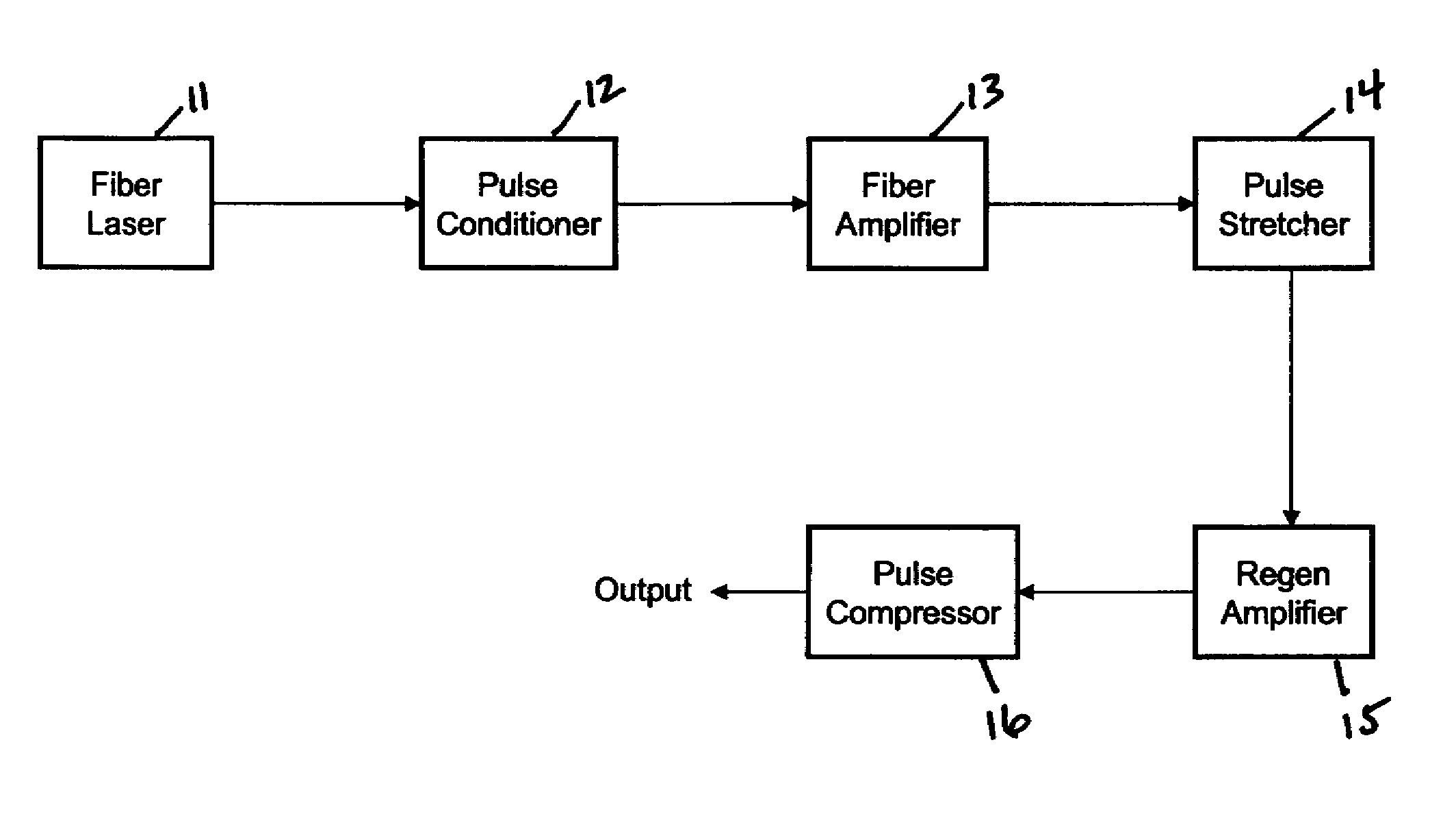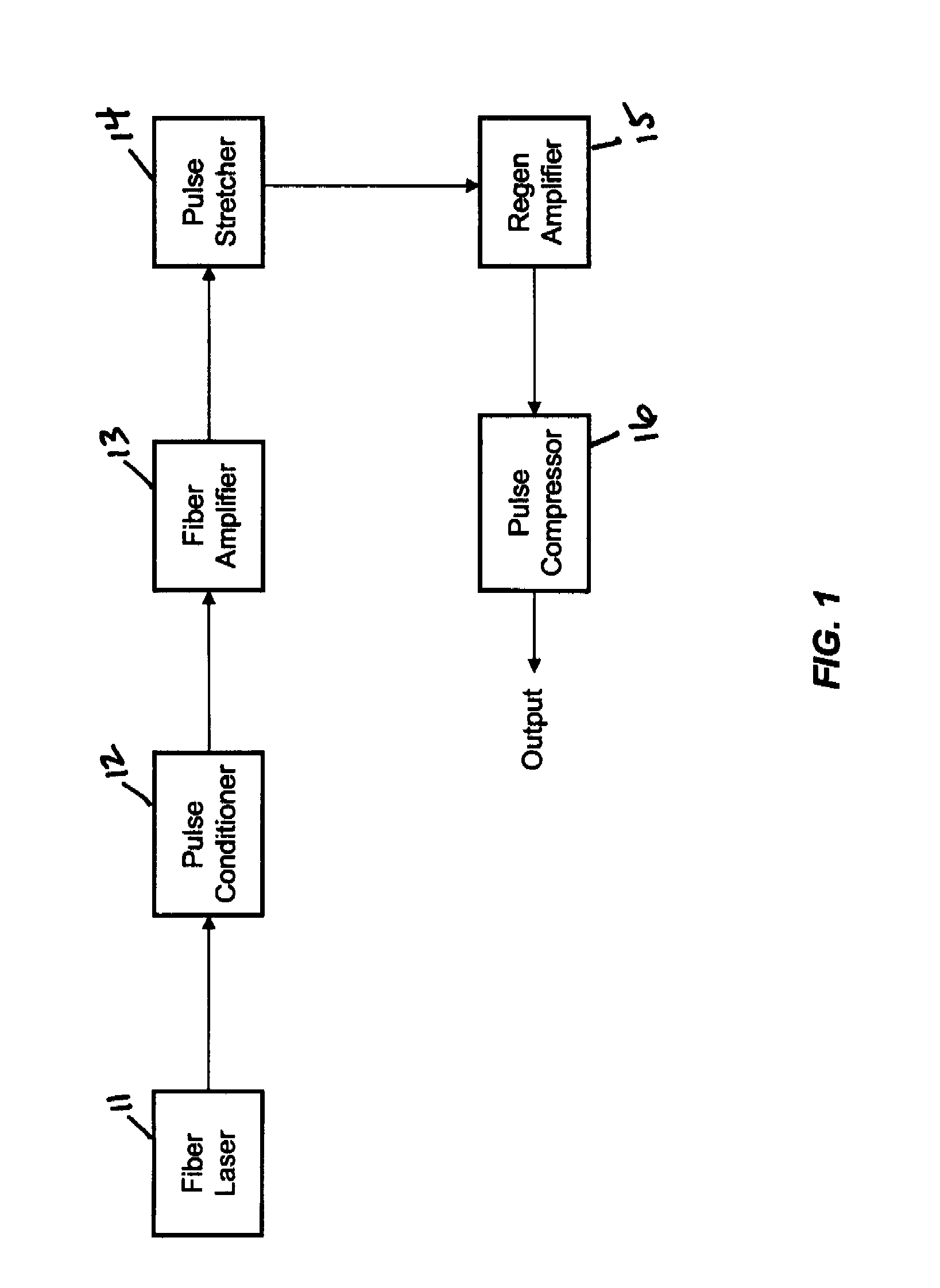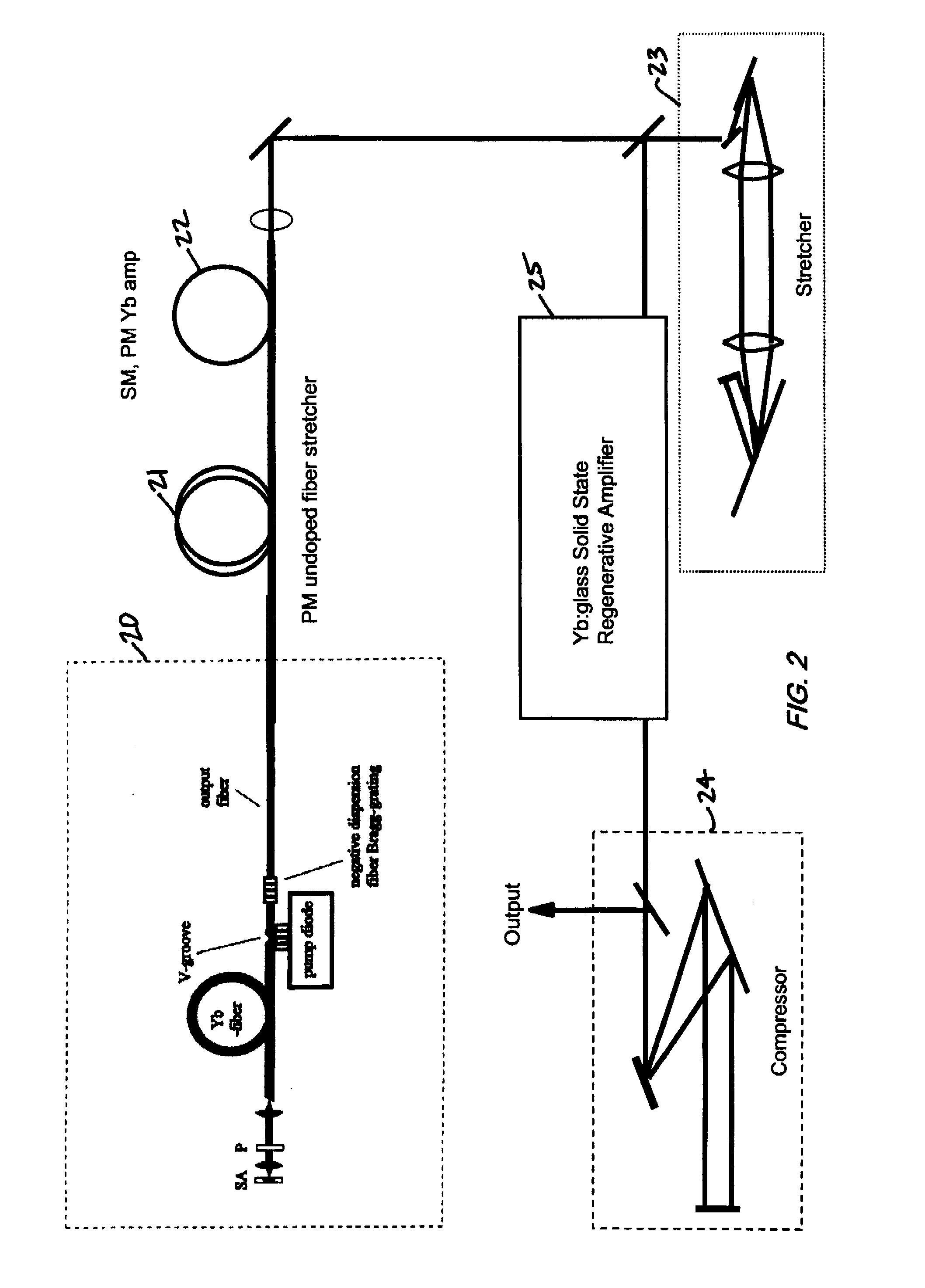Utilization of yb: and nd: mode-locked oscillators in solid-state short pulse laser system
a mode-locked oscillator and short-pulse laser technology, which is applied in the direction of semiconductor lasers, active medium materials, instruments, etc., can solve the problems of inability to correct wavelength shifts due to additional losses, narrow spectral output, and broaden temporal pulse output, so as to reduce tolerances, reduce repetition rate, and increase pulse energy from fiber amplifiers
- Summary
- Abstract
- Description
- Claims
- Application Information
AI Technical Summary
Benefits of technology
Problems solved by technology
Method used
Image
Examples
Embodiment Construction
[0042]A generalized illustration of the system of the invention is shown in FIG. 1. The pulses are generated in the Yb: or Nd: doped fiber mode-locked oscillator 11. These are coupled into a pulse conditioner 12 for spectral narrowing, broadening or shaping, wavelength converting, temporal pulse compression or stretching, pulse attenuation and / or lowering the repetition rate of the pulse train. The pulses are subsequently coupled into an Yb: or Nd: fiber amplifier 13. Pulse stretcher 14 provides further pulse stretching before the amplification in the regenerative amplifier 15 that is based on an Nd: or Yb: doped solid-state laser material. The compressor 16 compresses the pulse back to near transform limit. The six subsystems can be utilized to various degrees as is described in the subsequent embodiments.
[0043]The first embodiment is shown in FIG. 2. The Yb: oscillator 20 is the same as shown in FIG. 8 of co-pending U.S. application Ser. No. 09 / 576,772. The pulse width of the osci...
PUM
| Property | Measurement | Unit |
|---|---|---|
| wavelength | aaaaa | aaaaa |
| excitation level | aaaaa | aaaaa |
| wavelength | aaaaa | aaaaa |
Abstract
Description
Claims
Application Information
 Login to View More
Login to View More - R&D
- Intellectual Property
- Life Sciences
- Materials
- Tech Scout
- Unparalleled Data Quality
- Higher Quality Content
- 60% Fewer Hallucinations
Browse by: Latest US Patents, China's latest patents, Technical Efficacy Thesaurus, Application Domain, Technology Topic, Popular Technical Reports.
© 2025 PatSnap. All rights reserved.Legal|Privacy policy|Modern Slavery Act Transparency Statement|Sitemap|About US| Contact US: help@patsnap.com



